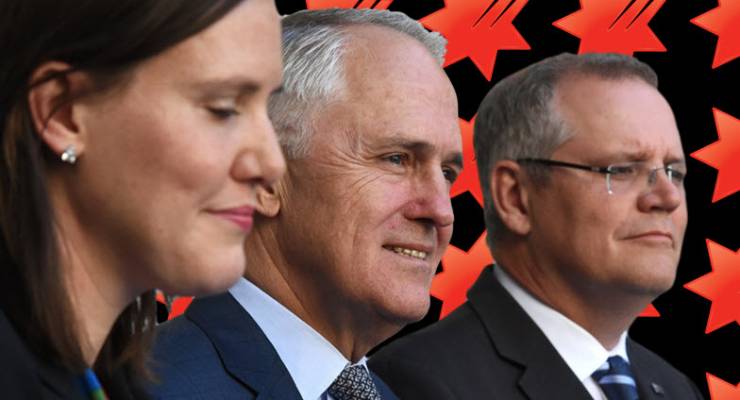
Remember the old days of the “two-speed economy”? Julia Gillard was prime minister, Wayne Swan was treasurer, and Western Australia (especially) and Queensland were blasting along with the greatest mining investment boom ever seen in Australia, while the rest of us struggled with a dollar above parity and a vast suction effect as workers were pulled into mining construction and services. Well, that was the narrative at the time, and it was a little true.
Now we have a real two-speed economy. We’ve had it for some time, but yesterday’s national accounts confirm it. The split is not geographical; it’s between households and corporations. Profits are strong, export revenue is strong, non-mining investment is growing and the end of the decline of mining investment is in sight. In the March quarter, business even enjoyed a turnaround from the recent (small) decline in labour productivity. It’s silly to describe Australia as has “defying world trends” as one commentator did, given in April the IMF declared the world was enjoying a “broader” and “stronger” “global economic upswing” and global growth was forecast at 3.9% this year. But there’s no doubting the strength of the result of 1% quarterly growth, fueled by a 3.3% rise in the terms of trade (the strongest for a year), a 1.9% rise in real net national disposable income and a year-high in company profits.
But households are going nowhere. Some commentators described a 0.3% rise in household consumption as “a modest” gain, which “also brightened the outlook”. Seriously? That measly 0.3% was sharply lower than the 1.0% rise in the December quarter, and the annual rate of 2.9% for the March quarter was unchanged from December. There were also some attempts to conjure yet another “wage rises around the corner” line from the data. But don’t be fooled — the “Compensation Of Employees” (COE) figure in the national accounts can be misleading. COE rose 0.8% in the quarter and 5.1% in the year to March. Sounds great, huh? But it measures total compensation for people employed in all sectors — the 5.1% growth reflects strong jobs growth, not strong wages growth.
The real story is what is called AENA (or Average Earnings from the National Accounts). According to the ABS, AENA grew 1.6% in the four quarters to March. Remember, the wage price index series recently showed 2.1% growth in the year to March. That means the broader AENA measure picked up industries where wages fell in the quarter and the year. Given real net national disposable income was up 2.5% in the year to March, that shows workers are missing out.
This is why household spending is so tepid — and why even to prop up that low level of spending, families have been increasingly dipping into savings. “The weakness in consumers is well known,” the AMP’s Shane Oliver wrote about the data. “Real wages growth is running flat, the savings ratio is now very low at just 2.1% and debt levels are very high. It is difficult to see households gaining confidence to run down their savings rate further in the current environment of low wages growth, slowing wealth accumulation (as home price growth weakens) and high debt levels.”
The NAB agreed. “While the quarterly outcome was weaker than we expected, it is more in line with our assessment of the underlying rate of growth in household spending. The significant headwinds faced by the household sector — weak wage growth, cooling house prices and high debt levels — continue, and are likely to weigh on consumption in 2018.”
This is the flip side of what is a Goldilocks economy for business, which is enjoying high profits, zero wage growth, low interest rates and rising terms of trade: their primary customers, Australian workers, can’t spend what they don’t have and what businesses refuse to give them — decent wage rises.
That’s not the only reason coming quarters will likely see a fall in growth. When the next (June quarter) set of national accounts are released in early September, the strong 1.0% growth rate (revised up from 0.8% originally reported) in the March 2017 quarter will drop out of the annual result. Without back to back 1% growth quarterly rises in GDP — and we haven’t had one of those since the Gillard-Swan years — annual growth will fall back again.
Either way, households will likely continue to miss out in an economy that is great for corporations and shareholders.









Crikey is committed to hosting lively discussions. Help us keep the conversation useful, interesting and welcoming. We aim to publish comments quickly in the interest of promoting robust conversation, but we’re a small team and we deploy filters to protect against legal risk. Occasionally your comment may be held up while we review, but we’re working as fast as we can to keep the conversation rolling.
The Crikey comment section is members-only content. Please subscribe to leave a comment.
The Crikey comment section is members-only content. Please login to leave a comment.